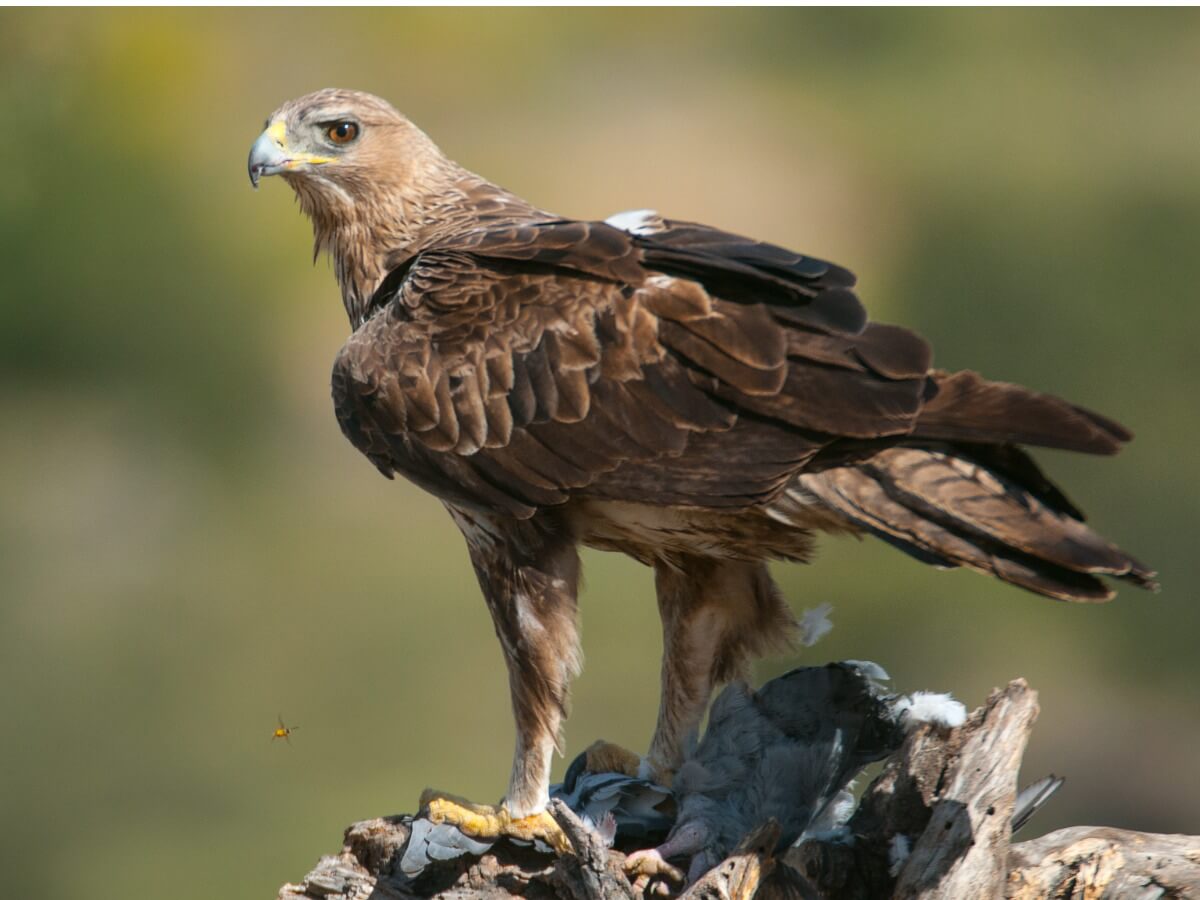The Animals with the Best Eyesight

Humans are so dependent on sight, and it’s fascinating to explore this sense in other species too. Animals, just like us, use their eyes to find food, detect threats, and communicate with the environment. However, some of them have capabilities that are much more advanced than humans, to the point that we could consider them “supersenses”. That’s why in today’s article we’re going to bring you the animals with the best eyesight, and explain their incredible capabilities. Don’t miss it.
The animals with the best eyesight
Animals’ senses are designed taking into account their biological needs. For example, those that need to hunt will be especially sensitive to movement and those that feed on flowers will be able to detect non-spectral hues. Let’s take a look at the most striking examples.
1. Raptors
We all know the expression “eagle-eyed”. This saying is no coincidence, as eagles and nocturnal raptors are capable of detecting objects miles away with incredible accuracy. In addition, many of them have two foveas, which allows them to fix their sight on two objects at the same time.
They have more cells in their retina to detect light than we do and, in addition, they have a field of vision much larger than ours (340º).

2. Cats
Cats, in addition to their excellent eyesight, have an incredible ability to see in the dark. Thanks to the tapetum lucidum, a layer of tissue located in the choroid, the light that enters their eyes is “recycled”, thus increasing the amount available to the retina.
In cats, this ocular structure increases the brightness of vision by 40%.
3. Mantis shrimp (Gonodactylus Smithii)
This incredible Australian crustacean is the living being with the most complex eyesight known to date. While humans have only 3 types of cones (the cells specialized in detecting color), this animal has 12.
Despite that, they don’t see impossible colors. They do, however, detect ultraviolet and infrared colors that we don’t, as well as 4 different types of polarization. Thanks to this, the small almost transparent animals on the seabed don’t go unnoticed by the mantis shrimp.
4. Chameleons
It’s not all about colors and visual sharpness, another of the animals with the best eyesight in their particular kingdom is the chameleon. Everyone already knows about its incredible ability to move its eyes independently, but it’s also capable of focusing at various distances.
Even so, its eyes aren’t entirely independent, as they converge when detecting prey to provide the reptile with binocular vision.
5. Geckos
Going back to colors, we need to mention these special reptiles. The gecko’s eyes are 350 times more sensitive to colors than those of humans. Thanks to this, they have the incredible ability to see colors in the dark. Also, like other hunting animals, they have a multifocal system that allows them to calculate distances with ease.
6. Cheetah (Acinonyx Jubatus)
Cheetahs aren’t only fast; to take advantage of that potential they need to lock onto a target first. That’s why they’re able to locate their prey from a whopping 5 kilometers away. In addition, their visual acuity helps them to find them in difficult environments or situations, such as in the middle of a chase or in the undergrowth.
7. Goats and sheep
These animals have pupils that certainly “catch the eye” (if you’ll pardon the pun); this is due to its rectangular shape. This is no coincidence, as they often depend on their eyesight to save their lives. Thanks to this curious adaptation, their range of vision is a very wide 320º. It’s difficult to surprise them from behind.
8. Octopuses and cuttlefish
These animals couldn’t be missing from this list, as they’re incredible animals in every way. At first, it was believed that octopuses and their marine cousins didn’t detect colors, but only polarized light. However, a study revealed that they actually change their visible spectrum of colors to adapt to the depth they swim at.
In coastal areas, their vision is dominated by green, which progressively shifts to blue as they dive deeper, where light is scarcer.
7. Hummingbirds
In general, birds have excellent color perception, especially those that feed on flowers and fruits. This is the case of the hummingbird, which is crowned as one of the animals with the best eyesight in nature, thanks to its ability to see ultraviolet light (it has specialized cells for this color). It can perceive combinations that humans can’t even conceive of.

Did you know about these animals’ incredible eyesight? They aren’t the only ones that have better-developed eyes than humans; each species has a specific set of needs that their bodies have adapted to. The animal kingdom is a truly fascinating place and we trust that this article has given you a new insight into a few of them.
All cited sources were thoroughly reviewed by our team to ensure their quality, reliability, currency, and validity. The bibliography of this article was considered reliable and of academic or scientific accuracy.
- Chung, W. S., & Marshall, N. J. (2016). Comparative visual ecology of cephalopods from different habitats. Proceedings of the Royal Society B: Biological Sciences, 283(1838), 20161346.
- Wild hummingbirds discriminate nonspectral colors. Mary Caswell Stoddard et al. PNAS , 15 de junio de 2020
- Thoen, H. H., How, M. J., Chiou, T. H., & Marshall, J. (2014). A different form of color vision in mantis shrimp. Science, 343(6169), 411-413.
- Horváth, G., Horváth, G., Varju, D., & Horváth, G. (2004). Polarized light in animal vision: polarization patterns in nature. Springer Science & Business Media.
This text is provided for informational purposes only and does not replace consultation with a professional. If in doubt, consult your specialist.